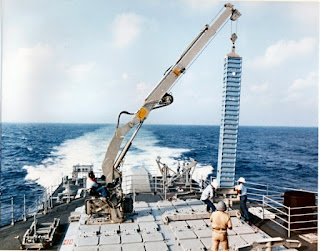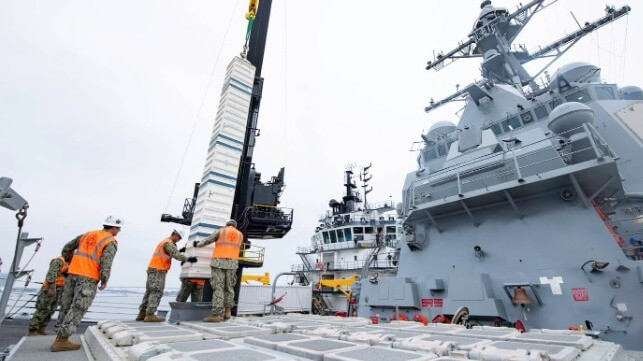 The below was posted nine years ago when the Vietnamese government helped us bring a few Shipmates home.
The below was posted nine years ago when the Vietnamese government helped us bring a few Shipmates home.
I thought of this over Christmas when I was still stewing about Big Navy's final success in killing what little remained of the Navy's trained CSAR capability with the death of HSC-85.
One of the big and enduring lessons of the Vietnam War was the absolute requirement to maintain a cadre of specially trained navy rotary wing aircrew and equipment for special operations and combat search and rescue.
We learned that lesson because of what happened when we had non-trained personnel do the mission because we had no choice.
They are specialized requirements that really can't be shoehorned in to "multi-mission" - regardless of what the accountants tell you.
Especially in areas of sustained operations at sea and near shore, Navy Special Warfare will need RW assets they control and have worked closely with for extended periods.
With the likelihood of another conflict in the Pacific greater than it has been in decades, there are two constants that have not changed. First is geography. For the USA, operations in the Pacific will be dominated by maritime and near shore power projection.
The second is that aircraft will be shot down. Aircraft will break down or run out of fuel well away from "the Joint force." Pilots will need to be rescued. "This requirement will be sourced via the Joint Force" is a peace time answer by a bureaucrat, not someone preparing for war.
With the last rump of this capability gone, that does not mean the requirement will go away?
No.
Navy, Marine Corp., and yes, even USAF aircraft will go down at sea and near shore. The nearest and probably only asset available in real time will be the US Navy.
The mission will be done - regardless if we have a crew trained in that mission, or an aircraft designed for that mission.
Combat Search and Rescue will be done. When minutes matter, days or weeks to get on the schedule is not an answer.
The message will come in. Aircrew will get engines started. Attempts will be made. To not try is to break an unwritten bond we have to not leave anyone behind if possible.
There will be successes, but when you ask people and aircraft to do something they are not trained or designed to do, there will be more death, more failure, more losses. More remains that will take decades to come home.
In July 1967, a pilot was down over 20 miles inland - not a normal "get me out of the drink" search and rescue - and a straight-stick SH-3A (not the HH-3E "Jolly Green Giant") and her crew took off from the USS Hornet (CV-12) to go get him.
We keep promises to each other.
We try.
We will have to keep these promises again. Are we training and equipping our people to be ready for the call when the call comes?
Say hello to Lieutenant Dennis Patterson, USN and his daughter before his last deployment. I have a picture almost exactly like this, but in Summer Whites, with one of my daughters when she was almost the exact age and I was a couple of years older than Dennis.
He was 29 years old when he led his crew west.
Sometimes Fullbore is just all in a days work ... and a few decades to make it back home.
The Department of Defense POW/Missing Personnel Office (DPMO) announced April 30 that a Navy pilot, missing from the Vietnam War, has been accounted for and will be buried with full military honors along with his crew.Giving your all to make sure that every effort is made to make sure we leave no one behind.
Navy Lt. Dennis W. Peterson of Huntington Park, Calif., was the pilot of a SH-3A helicopter that crashed in Ha Nam Province, North Vietnam. Peterson was accounted for on March 30, 2012. Also, aboard the aircraft was Ensign Donald P. Frye of Los Angeles, Calif.; Aviation Antisubmarine Warfare Technicians William B. Jackson of Stockdale, Texas; and Donald P. McGrane of Waverly, Iowa. The crew will be buried, as a group, on May 2 at Arlington National Cemetery.
On July 19, 1967, the four servicemen took off from the USS Hornet aboard an SH-3A Sea King helicopter, on a search and rescue mission looking for a downed pilot in Ha Nam Province, North Vietnam. During the mission, an enemy concealed 37mm gun position targeted the helicopter as it flew in. The helicopter was hit by the anti-aircraft gunfire, causing the aircraft to lose control, catch fire and crash, killing all four servicemen.
In October 1982, the Socialist Republic of Vietnam (S.R.V.) repatriated five boxes of remains to U.S. officials. In 2009, the remains within the boxes were identified as Frye, Jackson, and McGrane.
In 1993, a joint U.S./S.R.V. team, investigated a loss in Ha Nam Province. The team interviewed local villagers who identified possible burial sites linked to the loss. One local claimed to have buried two of the crewmen near the wreckage, but indicated that both graves had subsequently been exhumed.
Between 1994 and 2000, three joint U.S./S.R.V. teams excavated the previous site and recovered human remains and aircraft wreckage that correlated to the crew's SH-3A helicopter. In 2000, U.S. personnel excavated the crash site recovering additional remains. Analysis from the Joint POW/MIA Command Central Identification Laboratory subsequently designated these additional remains as the co-mingled remains of all four crewmen, including Peterson.
Welcome home Shipmates.




























